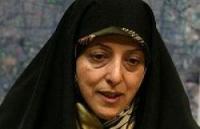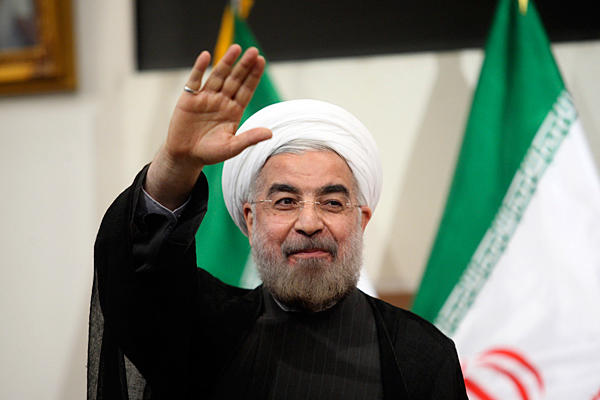January 17-2014

. . . rises to #7
The head of Iran’s Environmental Protection Agency is warning that Iran is one of the biggest producers of greenhouse gases in the world—and is getting worse, not better.
Although Iran ranks 17th in the world in terms of population, Masumeh Ebtekar said Iran is now the seventh-highest producer of greenhouse gas emissions in the world. Two years ago, it was ranked 10th.
She also said temperatures across the country have risen 1.5 to 3 degrees centigrade, the Mehr news agency reported.

She stressed that Iranians should prepare themselves for changing climate patterns and declining water levels as a result of rising temperatures.
Iran has seen a sharp decline in precipitation in recent years and the drying up of many bodies of water across the country, such as Lake Urumiyeh, Lake Hamoon and the Zayandeh River.
Ebtekar said environmental resources are being depleted at a rapid pace, saying that in world rankings of environmental indicators, Iran has fallen 61 places.
Ebtekar took over the environmental agency last summer as part of Hassan Rohani’s Administration and she has been highly critical of the former government’s lack of action in the environmental field.
One year ago, Iran was ranked next-to-worst in the world for its efforts—or lack of them—to restrain climate change.
Only Saudi Arabia was ranked worse in the ratings that covered the 58 countries around the globe that account for 90 percent of energy-related CO2 emissions.
The Climate Change Performance Index was compiled by Climate Action Network Europe and Germanwatch.
The Islamic Republic had a delegation at the conference headed by Mohammad-Javad Mohammadizadeh, then the head of the Environmental Protection Agency. In his speech to the conference, the Islamic Republic News Agency (IRNA) reported he castigated the major industrial countries for failing to meet their commitments under the Kyoto Protocol.
IRNA did not report any response by him to Iran’s low ranking on the index, where the Islamic Republic was rated far below the countries Mohammadi-zadeh criticized.
The index was based 50 percent on trends in CO2 emissions, 30 percent on the total volume of CO2 emissions and 20 percent on subjective assessments of each country’s national climate change policy by more than 200 specialists from around the world.
The report on the index said Kazakhstan, Iran and Saudi Arabia were put at the bottom of the rankings both for high emissions and a trend to worse emissions.
Two years ago, a study ranked Iran the 10th worst polluter. Of the nine countries pumping more carbon pollutants into the air, only one—Canada—had a smaller population than Iran, making Iran’s high-ranking all the more surprising.
The index of 176 countries was done by Maplecroft, a British firm that specializes in risk analysis. The list was released at the UN climate talks in Durban, South Africa.
The top 10 countries on the list accounted for two-thirds of global greenhouse gas emissions combining CO2 emissions and non-CO2 emissions.
The top ten polluters, according to Maplecroft’s tabulation, were: China, US, India, Russia, Japan, Brazil, Germany, Canada, Mexico and Iran.
Ebtekar’s announcement last week moved Iran up to seventh place as a producer of greenhouse gases. She didn’t name the countries ahead of Iran.
In October 2011, the World Health Organization (WHO) issued a tabulation of pollution in 1,082 cities around the world showing that Ahvaz was the most polluted and Sanandaj the third worst in the world; all 18 Iranian cities tabulated were in the dirtiest 11 percent.
The WHO used as its measure the volume of particulate matter, which is largely sulfur dioxide and nitrogen dioxide from auto exhausts and industry.
Bahram Sanai, the chief of Iran’s Meteorological Organization, told the Fars news agency that was all the fault of the Americans.
“One of the reasons for the increasing amount of dust in Iran is the presence of occupying forces in Iraq, which has destroyed the agriculture and dried the tidal flats,” he said.
He said the bombardment of Iraq by US warplanes flattened the country and loaded the atmosphere with dust.
But the Americans had not dropped any significant number of bombs on Iraq for years. Furthermore, the drying out of Iraq’s famed marshes was done under Saddam Hussein, who wanted to stop opponents from taking refuge there. After the Americans took over in 2003, water flow was returned to the marshes.
Curiously, Iran’s Environmental Protection Agency remained silent about the WHO report. None of the media in Iran made a major story of the WHO report.























